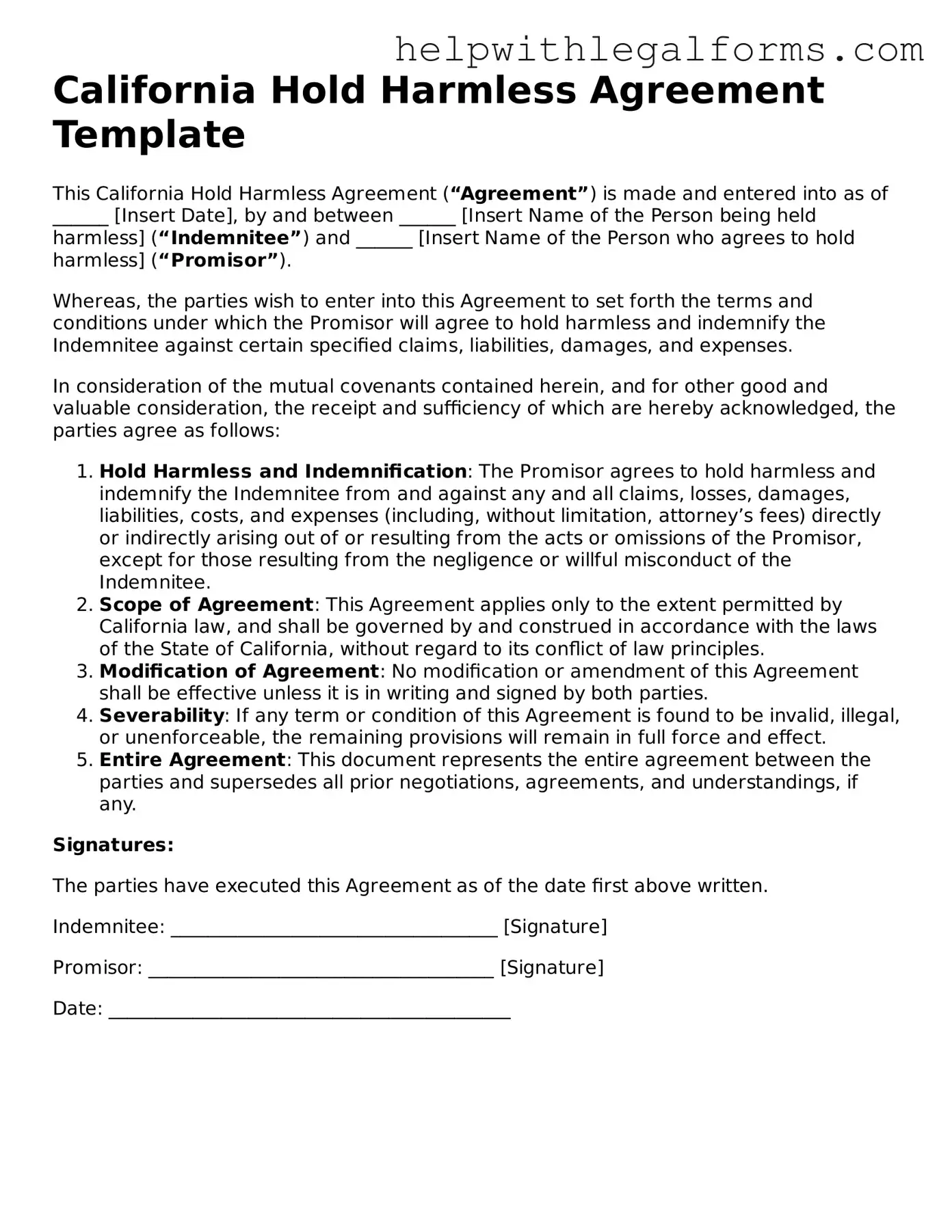What is a California Hold Harmless Agreement?
A California Hold Harmless Agreement is a legal document that transfers risk from one party to another. The party signing the agreement agrees not to hold the other party liable for any injuries, damages, losses, or liabilities incurred from a particular activity or service. This type of agreement is commonly used in the context of property use, construction projects, and various service provisions, thereby protecting one party from legal claims that may arise from the actions or negligence of the other.
Who needs a California Hold Harmless Agreement?
Individuals or entities operating within California that engage in activities involving potential risk may need a Hold Harmless Agreement. This includes contractors, business owners, event organizers, property owners, and any organization or person hosting activities that could potentially lead to injury or damage. It's especially relevant for those who wish to protect themselves against potential claims or legal issues that could arise from varying circumstances.
How is a California Hold Harmless Agreement executed?
Executing a California Hold Harmless Agreement involves drafting a document that outlines the specifics of the indemnity clause, the scope of protection, the parties involved, and the conditions under which the agreement is enforceable. Both parties must agree to the terms, and their signatures must be witnessed by a notary or other authorized official, depending on the agreement's complexity and the parties' preference. Consulting with legal counsel to ensure the agreement's enforceability and compliance with California law is strongly recommended.
Are there different types of Hold Harmless Agreements in California?
Yes, there are several types of Hold Harmless Agreements in California, each tailored to specific circumstances. These include:
- Broad form agreements, which offer the most comprehensive protection, transferring nearly all liability from one party to the other.
- Intermediate form agreements, which provide protection unless the party seeking indemnification is found to be solely at fault.
- Limited form agreements, which only transfer liability for accidents and liabilities caused by or related to the actions of the indemnitor.
Choosing the right type of agreement depends on the level of risk involved and the specific needs of the parties.
Can a California Hold Harmless Agreement be contested in court?
While a California Hold Harmless Agreement is designed to limit legal exposure, it can still be contested in court. Courts will examine the agreement's clarity, scope, and fairness. If an agreement is overly broad, unclear, or deemed unconscionable, a court may find it unenforceable. Additionally, agreements that attempt to indemnify a party against their own negligence or criminal behavior may not be upheld. Legal advice can help craft a fair, clear, and enforceable agreement.
What should be included in a California Hold Harmless Agreement?
A comprehensive California Hold Harmless Agreement should include:
- The name and details of the parties involved.
- A clear description of the activity or service being covered.
- The scope of indemnification, specifying what liabilities are being assumed and any limitations.
- The duration of the agreement's validity.
- Any conditions or situations in which the agreement would not apply.
- Signatures of all parties involved, and the date of signing.
For maximum protection and enforceability, consulting with a legal professional to tailor the agreement to the specific context is advisable.
